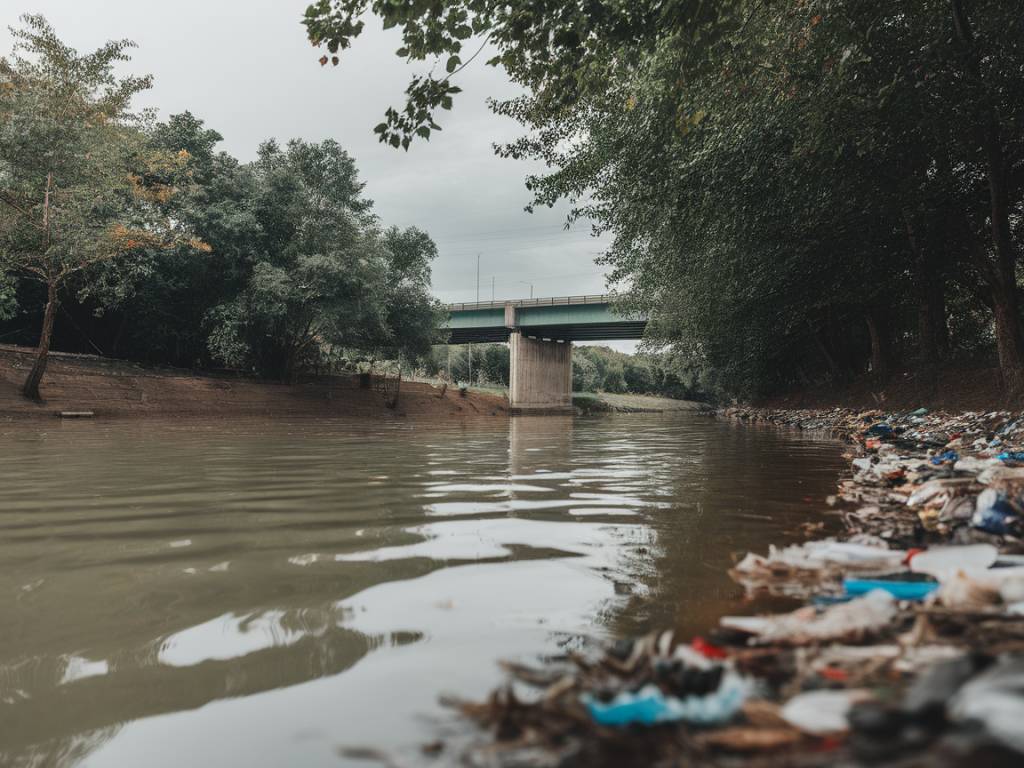The Dance of Water and Industry: A Call for Sustainable Management
In the grand symphony of life, water is both the conductor and the orchestra, harmonizing the rhythms of nature and human endeavor. Yet, with industrialization, this pristine conductor has met dissonance in the form of pollution, a stark reminder of the delicate balance we’ve disrupted. How can we mold a narrative where companies become stewards of our aquatic realms? The answer lies in thoughtful water management strategies, woven with innovation and responsibility.
Understanding the Ripples: Impact of Industrial Pollution
Imagine a pebble tossed into a serene pond; it creates ripples that extend far beyond the point of entry. Such is the nature of industrial water pollution. A single factory’s disregard for proper waste management can set off a cascade of effects—from harming local aquatic life to polluting drinking water sources. Companies must first acknowledge these ripples to manage them effectively.
Charting the Waters: The Role of Regulatory Frameworks
Regulation serves as the lighthouse guiding companies through the murky waters of pollution. By adhering to environmental guidelines, industries can significantly reduce harmful discharges. Take the example of Sweden, where stringent policies have resulted in the near eradication of toxic effluents from pharmaceutical companies. It’s a testament to what rigorous oversight coupled with corporate responsibility can achieve.
Innovative Filtration: Embracing Technology
What if the very currents we seek to protect could be purified by the innovations of our time? Advanced filtration technologies like nanofiltration and reverse osmosis present viable solutions to curb water pollution. Consider the textile industry, notorious for its dye-laden waste. By employing cutting-edge filtration systems, these companies can dramatically reduce pollutants, mirroring nature’s own filtration prowess demonstrated by wetlands and mangroves.
The Power of Circular Thinking
Nature itself is the master of recycling, where every element finds a purpose and nothing goes to waste. Companies can learn from this circular paradigm by seeking to recycle and reuse water within their processes. The beverage giant PepsiCo has pioneered water reuse in its manufacturing plants, achieving more than 50 million gallons of water savings each year. This closed-loop approach not only conserves water but also significantly cuts down pollution.
Building Partnerships: Joining Forces for a Greener Tomorrow
As the proverb goes, “If you want to go fast, go alone; if you want to go far, go together.” Collaborative efforts between companies, governments, and environmental organizations can amplify the impact of individual initiatives. One inspiring example is the partnership between Danone and the NGO WaterAid, working hand-in-hand to improve water management practices in developing countries, proving that together, we can steer the ship towards a sustainable future.
Employee Engagement: Stirring the Waters from Within
True change flows from the core of an organization, prompted by the hearts and minds of its employees. By cultivating a culture of sustainability, companies empower their workforce to become active participants in pollution reduction efforts. Simple initiatives, such as incentivizing suggestions for water-saving techniques, can create a ripple of internal innovation. At Google, employee-driven ideas have led to a reduction in water usage across several data centers, exemplifying the untapped potential within one’s own ranks.
Transparency and Accountability: The Ethical Compass
In our digital age, transparency is the bedrock of trust between companies and the public. Openly sharing water usage data and pollution statistics allows stakeholders to hold industries accountable. Take Unilever, which publishes detailed environmental progress reports annually, including water metrics, fostering trust and inspiring others to mirror their commitment.
Nurturing New Currents: Education and Awareness
Knowledge is the beacon that guides change. By hosting workshops and educational programs, companies can raise awareness about water management importance both within and outside their corporate walls. Consider Nestlé, which has implemented educational initiatives in local communities to highlight how sustainable practices can reduce water pollution, effectively expanding their impact far beyond the corporate sphere.
In closing, the relationship between companies and water is akin to that of sculptors and their clay. With attentiveness, innovation, and an unwavering commitment to ecology, these industrial sculptors can mold practices that both respect and rejuvenate the waterways upon which all life depends. With each effort, they contribute to a grander narrative of sustainability, one that both honors and protects the symphony of life conducted by water.

